Overview:
The article focuses on the A1C goals for individuals over the age of 60, emphasizing that optimal A1C levels should generally be maintained below 7%, with adjustments made based on individual health circumstances. This is supported by evidence linking high A1C levels to increased mortality rates in seniors, highlighting the necessity of personalized management strategies to achieve these goals while considering the risks associated with tight glycemic control.
Introduction
In the realm of diabetes management, understanding A1C levels is especially critical for older adults, who face unique health challenges that can complicate treatment. A1C, or glycated hemoglobin, serves as a key indicator of long-term blood glucose control, influencing not only health outcomes but also quality of life.
As the population aged 60 and above continues to grow, it becomes imperative to establish personalized A1C goals that take into account individual health conditions, risks, and lifestyle factors.
This article delves into the recommended A1C targets for seniors, the potential risks associated with tight glycemic control, and effective strategies for achieving optimal A1C levels. Through informed discussions with healthcare providers and tailored management plans, older adults can navigate the complexities of diabetes, ultimately enhancing their well-being and longevity.
Understanding A1C Goals for Adults Over 60
As T2DSolutions gets ready to launch as a comprehensive resource for Type 2 and Type 3 glucose management education and community support, it is essential to emphasize the importance of A1C, or glycated hemoglobin, as a vital indicator of blood sugar control over time, particularly for individuals over the age of 60. Understanding the A1C goals by age 60 is vital, as these levels can significantly impact overall health and quality of life. Generally, an optimal A1C level is below 7%; however, this target may be tailored according to individual health circumstances, including pre-existing medical conditions and the potential risk of hypoglycemia.
Research shows that seniors with high blood sugar levels face a higher mortality rate associated with elevated A1C levels, with life expectancy averaging less than five years for individuals aged 75–79 with just four additional index points. Thus, participating in conversations with healthcare providers becomes essential for seniors to set their distinct health conditions and lifestyle requirements in order to achieve personalized A1C goals by age 60. Such individualized strategies may lead to improved health outcomes, as therapies focused on glycemic control, hyperlipidemia, and hypertension are particularly important for this demographic.
As T2DSolutions launches, it seeks to highlight the importance of customized treatment approaches in managing blood sugar conditions, tackling the challenges encountered by senior individuals. A case study titled 'Diabetes in Older Adults' further highlights that over 25% of the U.S. population aged ≥65 years has this condition, reinforcing the importance of personalized care in navigating management for this growing population. To stay updated on our resources and receive notifications about new content, we invite you to subscribe to T2DSolutions as we embark on this journey together.
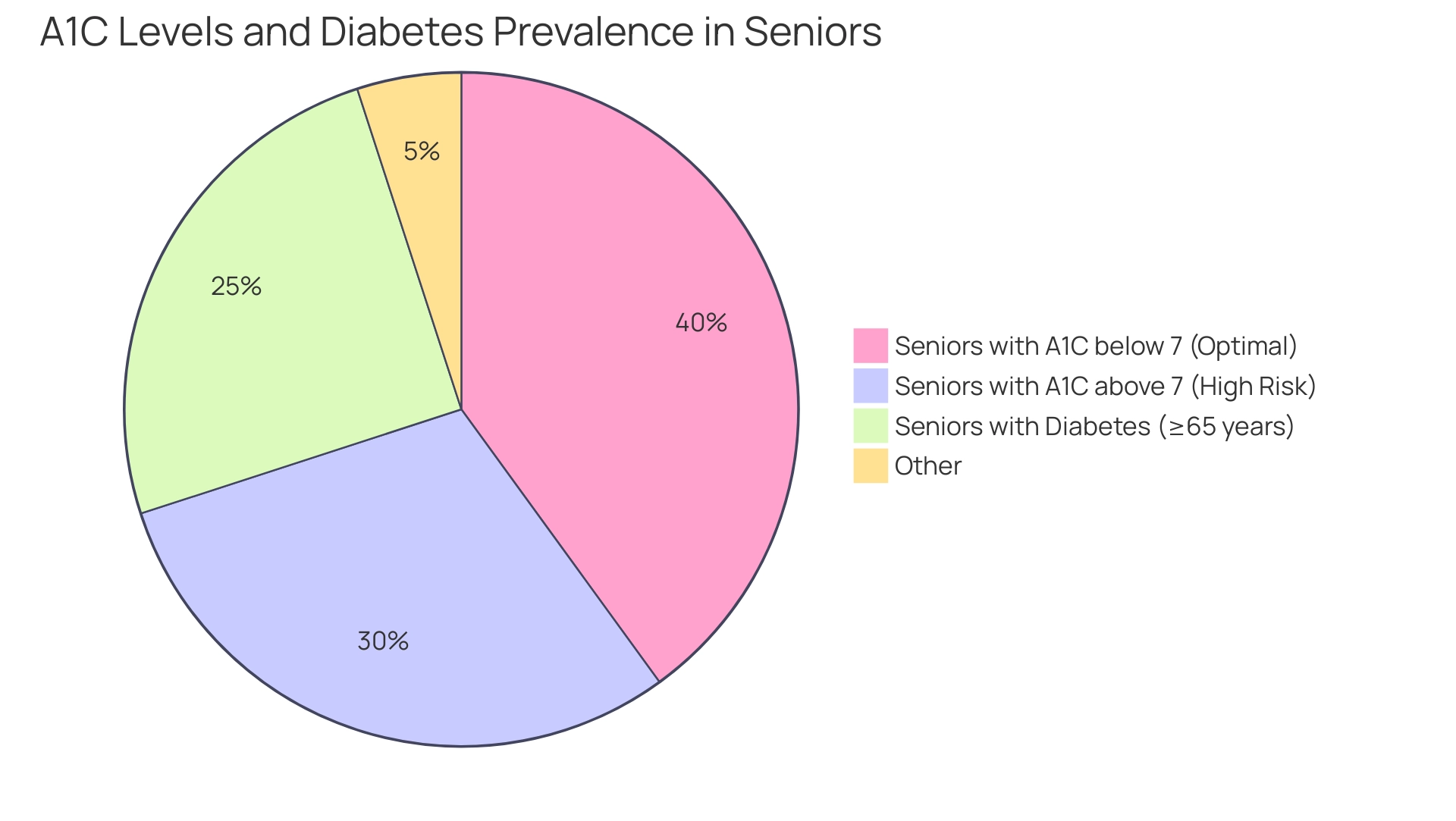
Recommended A1C Targets: What Older Adults Should Aim For
The American Diabetes Association (ADA) determines that for senior individuals, an A1C goal should generally fall between 7% and 8%, which is essential for achieving A1C goals by age 60, adjusted according to each person's health status and life expectancy. This guideline aims to strike a balance between reducing the risk of diabetes-related complications and acknowledging the potential adverse effects associated with strict glycemic control. Significantly, seniors with high blood sugar face increased rates of functional disability and accompanying health issues compared to those without high blood sugar, making personalized management even more essential.
For senior adults with a history of severe hypoglycemia or multiple comorbidities, a more lenient target of up to 8.5% may be advisable. This approach is backed by recent insights from the case study titled Evaluating Medications in Older Patients, which emphasizes the significance of reassessing treatment plans as older patients may have been on the same medications for years, resulting in declines in their overall health status. Key considerations from this case study include:
- The alignment of patient outcomes with A1C goals by age 60
- The presence of adverse effects
- The risk of hypoglycemia, particularly for those on sulfonylureas or insulin
It is vital for individuals to collaborate closely with their healthcare teams to determine the most suitable A1C target, taking into account their unique circumstances and health profiles. The ADA's revised Standards of Care in Diabetes–2024 emphasizes these considerations, stating, 'Summary of revisions: Standards of Care in Diabetes–2024,' ensuring that A1C management is both effective and personalized. Incorporating these A1C goals and guidelines into the T2DSolutions resource hub can offer newly diagnosed patients with essential knowledge and support for managing their condition effectively.
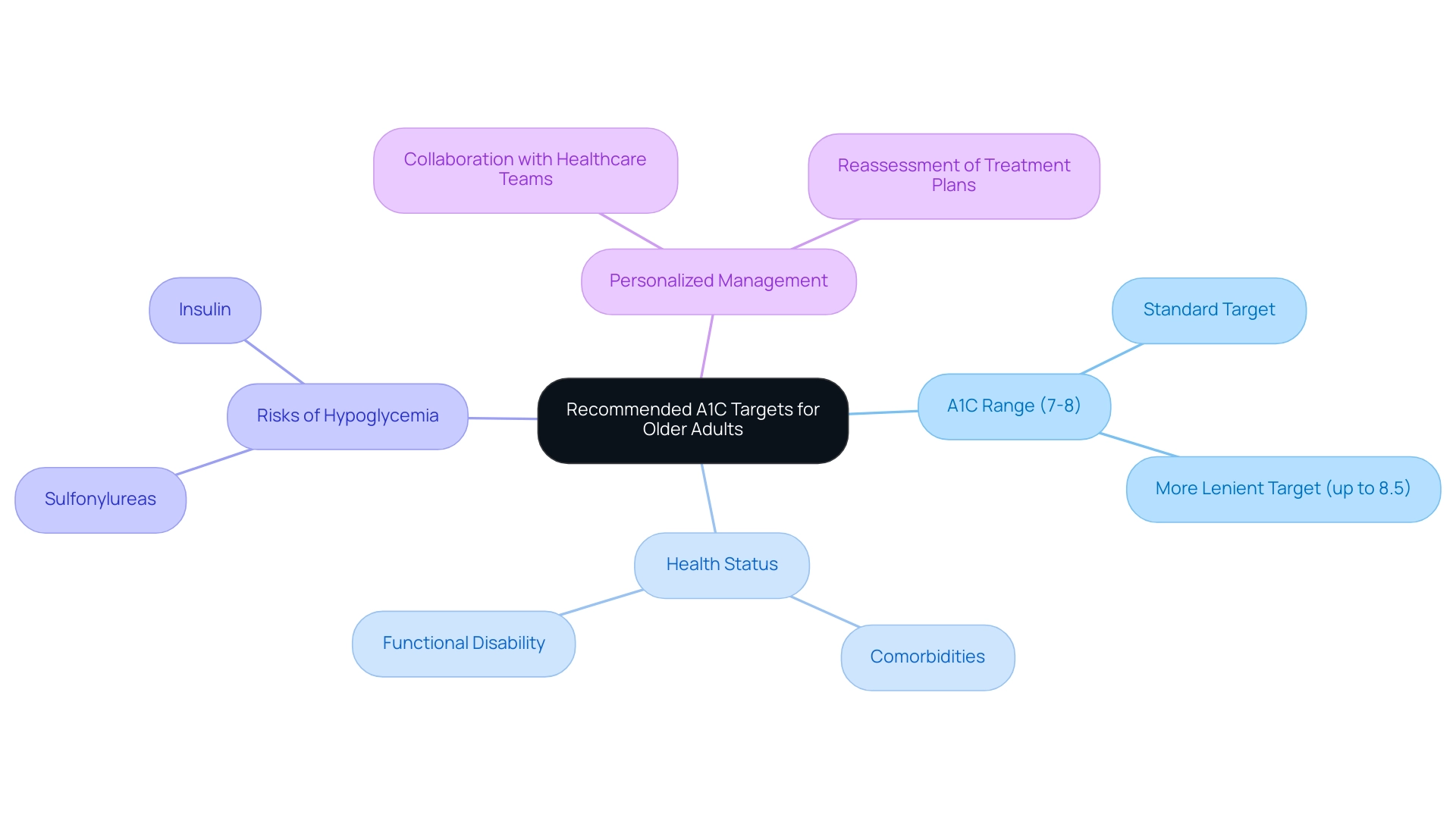
The Risks of Tight Glycemic Control in Older Adults
As T2DSolutions launches as a new resource hub for Type 2 and Type 3 diabetes education and community support, it is crucial to understand that achieving A1C goals by age 60 is essential for effective diabetes management. However, excessively strict glycemic management can present considerable risks, especially for seniors. Research indicates that intensive treatment approaches may increase the incidence of hypoglycemia, which is a condition that presents particular dangers in this demographic.
Significantly, Dr. Kasia J Lipska states, 'In elderly individuals with multiple serious comorbidities and functional limitations, the harms of intensive glycemic control likely exceed the benefits.' This insight is particularly pertinent as senior individuals exhibit different physiological responses than younger populations, influencing the effectiveness and risks of treatment. For instance, a case study involving an 81-year-old patient with an A1C of 6.6% highlighted the need to reassess treatment options.
Following discussions, the decision was made to:
- Relax the A1C goals by age 60
- Discontinue glyburide due to its association with increased hypoglycemia risk
- Reconsider the use of sitagliptin
Moreover, a 1-year intensive self-management program has shown statistically significant advantages, including reduced A1C and enhanced weight management among seniors working towards A1C goals by age 60. This reinforces the idea that targeted approaches are preferable to aggressive treatment, emphasizing safety and quality of life.
T2DSolutions aims to provide comprehensive resources such as educational materials, community support options, and self-management programs to help newly diagnosed patients navigate these challenges. Therefore, as T2DSolutions seeks to enhance diabetes management, it is imperative to carefully evaluate the benefits of tight glycemic control against potential risks, prioritizing patient safety.
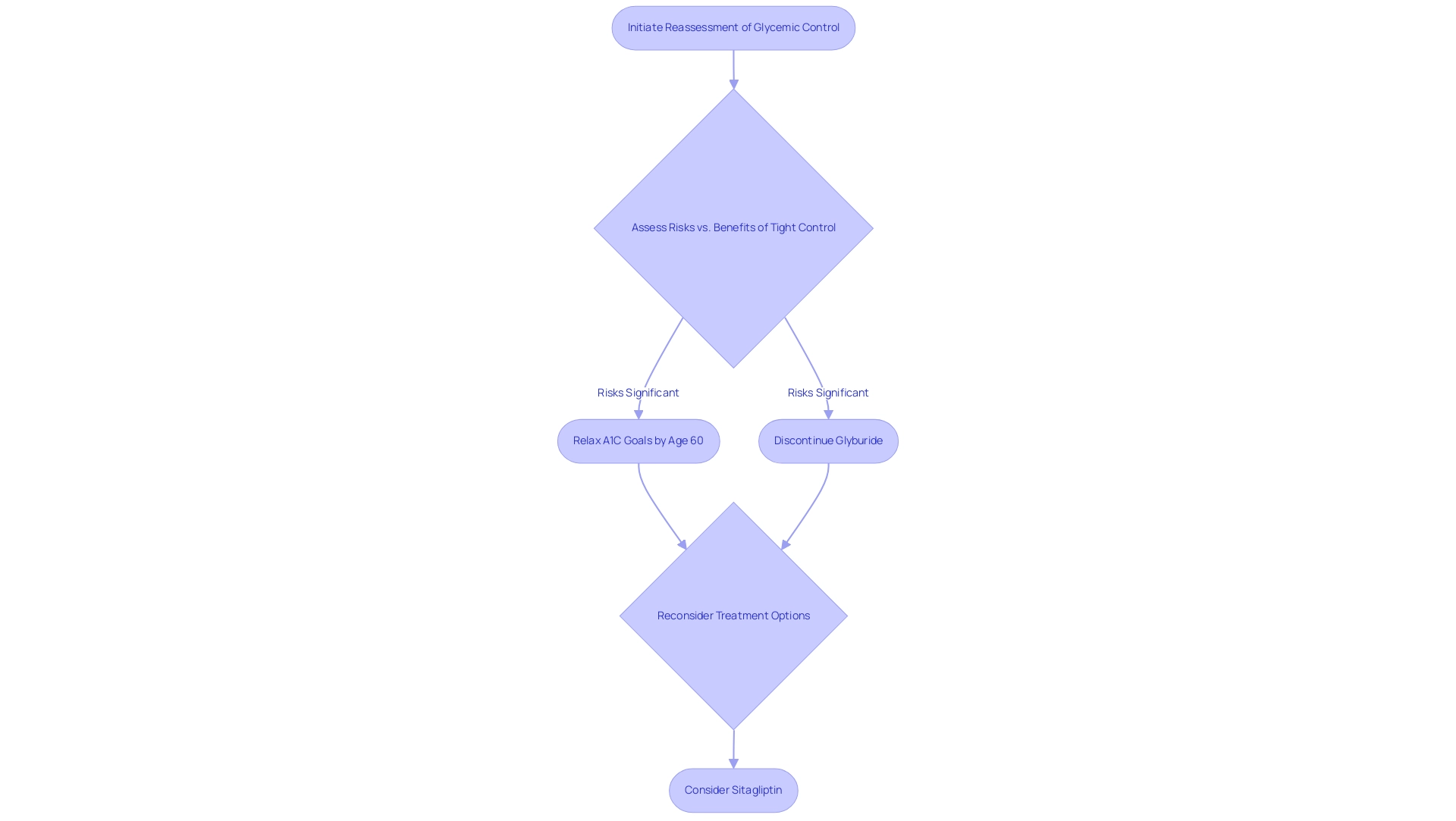
Factors Affecting A1C Levels in Seniors
A1C levels in seniors are influenced by a range of factors, primarily lifestyle choices, adherence to medication, and the presence of comorbidities such as hypertension and cardiovascular disease. Nutrition is especially vital; senior individuals often face difficulties in sustaining a balanced diet due to changes in taste preferences, decreased appetite, and restricted access to healthy foods. These dietary changes can significantly impact blood glucose levels.
In fact, glucose values consistently exceeding 300 mg/dL (16.7 mmol/L) over two consecutive days should prompt a call to the provider. Furthermore, as seniors often handle multiple prescriptions, their medication plans may need careful modifications to improve glycemic control. Regular monitoring of A1C levels and fostering open communication with healthcare providers are vital components in effectively managing these variables.
A1C remains a valuable marker for glycemic control, particularly in managing frail elderly patients to meet A1C goals by age 60. Recent findings underscore that maintaining stability in glycated hemoglobin A (HbA) levels within personalized target ranges is crucial for meeting A1C goals by age 60, which is associated with reduced risks of Alzheimer disease and related dementias (ADRD). Dr. Paul R. Conlin observes, 'In this research involving senior individuals with high blood sugar, enhanced HbA stability within personalized target ranges was linked to a reduced risk of ADRD.'
This connection illustrates the significance of personalized management strategies for blood sugar control in achieving A1C goals by age 60, which supports overall health in senior populations. T2DSolutions aims to empower newly diagnosed patients by providing educational resources and community support tailored to help them manage their A1C levels effectively. Furthermore, there is no consensus on the optimal frequency of A1C testing; the ADA advises that testing frequency should be based on physician judgment, with recommendations for at least twice a year for stable patients.
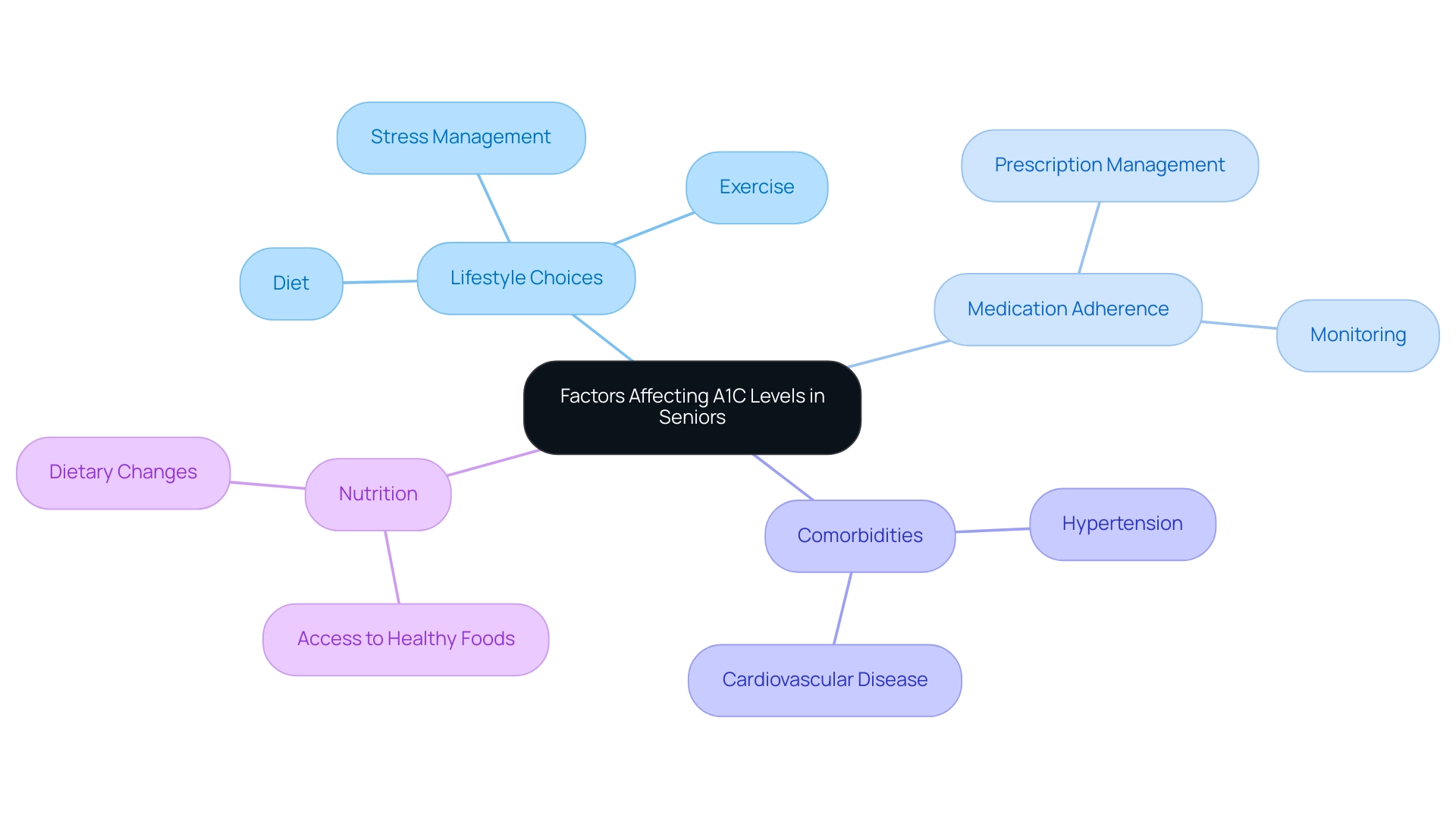
Strategies for Achieving Optimal A1C Levels in Older Adults
To achieve optimal A1C levels, older adults can adopt several effective strategies supported by T2DSolutions:
- Balanced Diet: Emphasizing a diet rich in whole grains, lean proteins, fruits, and vegetables is crucial. Monitoring carbohydrate consumption effectively regulates blood glucose levels, which is essential for managing this condition.
T2DSolutions can provide tailored meal planning resources that respect individual preferences and cultural backgrounds, significantly improving nutritional status.
- Regular Physical Activity: Engaging in regular exercise, such as walking, swimming, or yoga, enhances insulin sensitivity and overall health.
The American Diabetes Association recommends aiming for at least 150 minutes of moderate-intensity activity per week. T2DSolutions could offer community exercise programs that cater to varying capabilities, encouraging consistent physical activity.
-
Medication Management: Collaborating with healthcare providers is vital to ensure that medications are appropriately adjusted to reflect changes in health status or lifestyle. The ADA emphasizes that for any individual patient, the frequency of A1C testing should depend on the judgment of the physician, tailored to individual patient needs. T2DSolutions can facilitate connections with healthcare professionals to assist in medication management.
-
Routine Monitoring: Regularly checking blood glucose levels and A1C is essential for tracking progress and making necessary adjustments to management plans for the condition. T2DSolutions can provide tools for monitoring and tracking these metrics effectively.
-
Emotional Support: Seeking assistance from education programs, support groups, or mental health professionals is crucial for addressing the emotional aspects of managing this condition. T2DSolutions can enhance emotional well-being by fostering community engagement and support networks, which significantly impact adherence to dietary and exercise recommendations.
By implementing these strategies with the support of T2DSolutions, older adults can proactively work toward achieving and maintaining their A1C goals, enhancing their overall health and quality of life. Furthermore, it is important to note that in a multicenter trial, the withdrawal of statins among people with diabetes in palliative care was found to improve quality of life, highlighting the need for careful medication management.
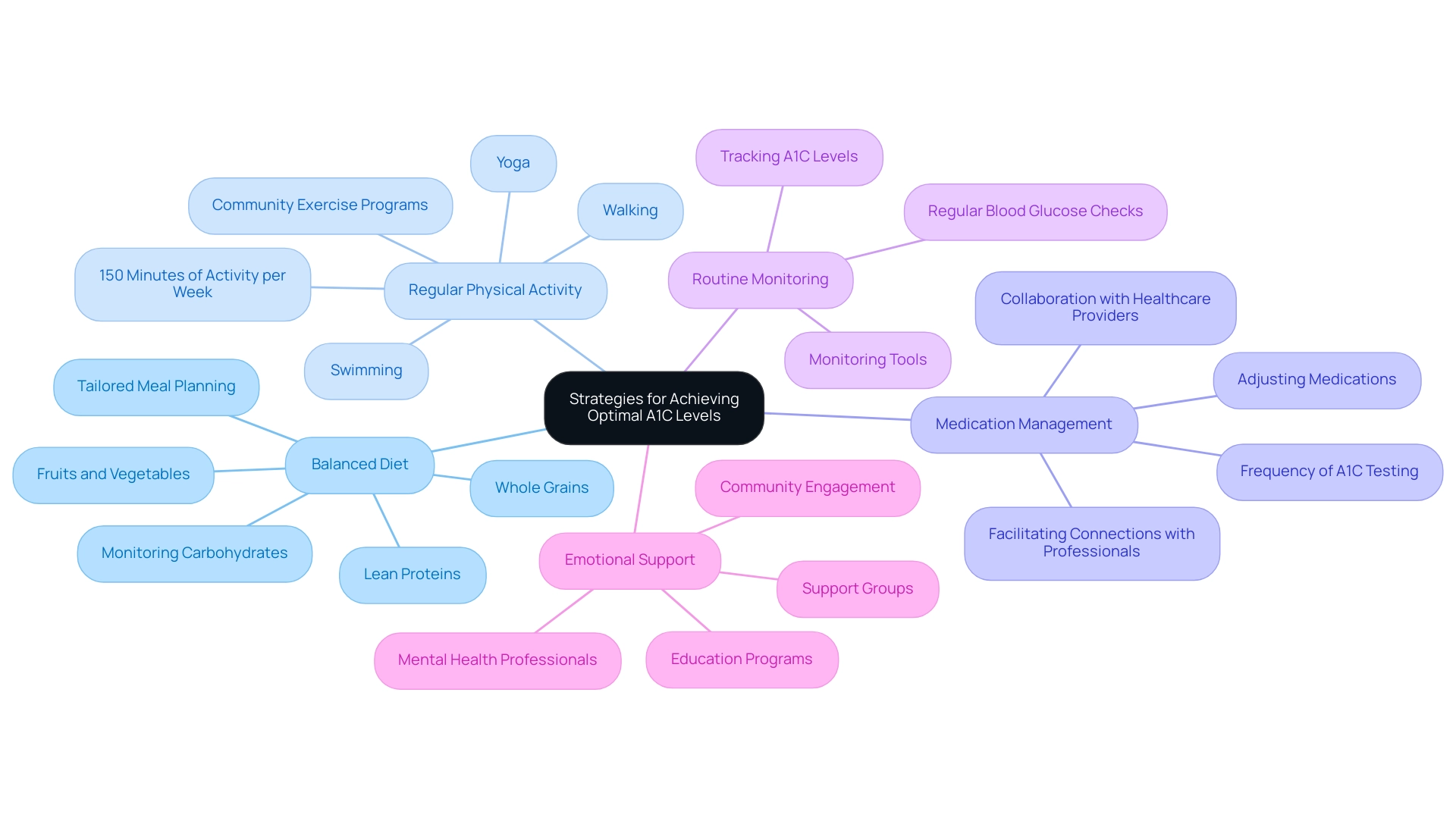
Conclusion
Establishing personalized A1C targets is crucial for older adults managing diabetes, as these levels significantly influence health outcomes and overall quality of life. The recommended A1C goals typically range from 7% to 8%, tailored to individual health conditions and life expectancy. This flexibility acknowledges the unique challenges faced by the elderly, including the risks associated with strict glycemic control, which can lead to severe complications such as hypoglycemia.
Moreover, understanding the factors that affect A1C levels, such as lifestyle choices and comorbidities, is essential for effective management. Regular monitoring and open communication with healthcare providers can help in adjusting treatment plans to enhance glycemic control while prioritizing patient safety. Strategies like maintaining a balanced diet, engaging in physical activity, and managing medications effectively contribute to achieving optimal A1C levels.
As the population of older adults with diabetes continues to grow, resources like T2DSolutions play a vital role in providing education and support tailored to their needs. By fostering individualized approaches to diabetes management, older adults can navigate the complexities of their condition, ultimately improving their health and longevity. Prioritizing personalized care will empower seniors to take charge of their diabetes management, enhancing their well-being and quality of life.



